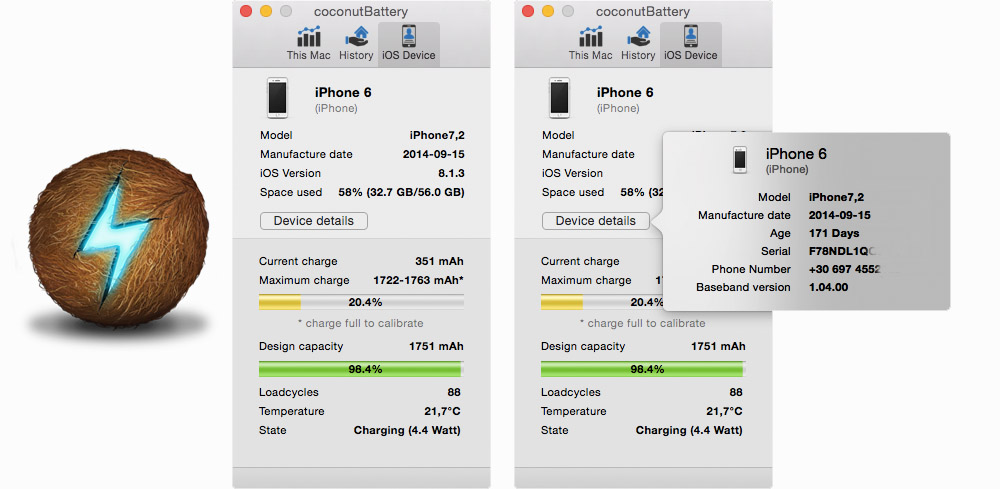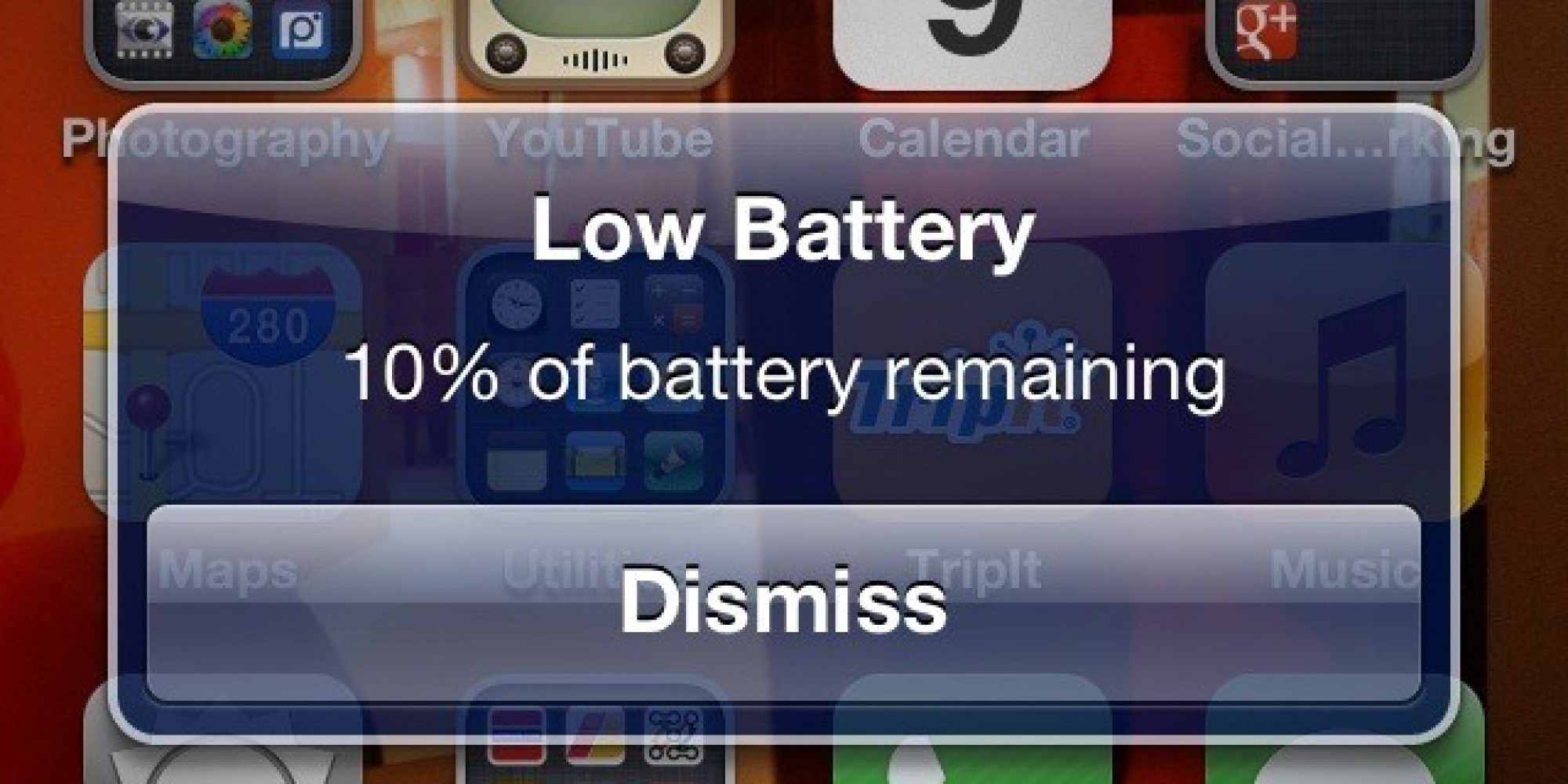How to determine iPhone and iPad battery life
When buying an iPhone or iPad, the last thing users look at is the battery capacity and battery life of the device.
It is quite logical that you start to think about how long the battery “holds” only when the gadget is rapidly discharged, and you have to constantly carry charging with you and look for the mains.
We bring to your attention some tips on how to find out the “reserve” of strength and energy consumption of your pet with an apple logo, as well as how to keep his charge as long as possible.
It is quite true that nothing in the world is eternal, and the battery of an iPhone or iPad is no exception. The smartphone and tablet begin to discharge faster and more often require “recharge”, and over time, battery replacement. But no matter how scary it all sounds, in practice, the battery of “apple” devices is quite hardy, and you do not have to worry about the fact that after a year of use it will have to be changed. At the time of the release of the first iPhone in 2007, Apple stated that the iPhone battery loses 20 percent of its capacity after four hundred full cycles. Therefore, if you do not “kill” the gadget with 8-hour conversations every day, then you will have to wait at least two years for such a decrease in capacity. However, in today's frantic pace of life and taking into account the resource intensity of various programs and games, the battery life of the iPhone and iPad can be dramatically different.
For example, you might find that your iPhone runs out of battery by only 2 percent after 22 hours of use, although this is very rare. In this case, you can consider yourself lucky and enjoy the operation of the device.
However, it happens that the battery starts to last only a couple of hours of waiting. Then it's time to sound the alarm and look for the cause of the rapid discharge. Most often, the most “gluttonous” consumers of energy are installed applications and games, in particular, those that use location services. If at the moment determining the location is not as important for you as extending the life of your smartphone, disable geolocation for a particular application or refuse it altogether. You can do this in the device settings.
Image-slider__item" data-cycle-pause-on-hover="#slider_250 .image-slider__crop" data-cycle-pager="#slider_250 .image-slider__pager" data-cycle-prev="#slider_250 .image-slider__prev" data-cycle-next="#slider_250 .image-slider__next" data-cycle-swipe="true" data-cycle-loader="wait" data-cycle-allow-wrap="false">
Another source of fast discharge of the gadget can be too much load on the hardware due to the maximum settings for screen brightness, contrast and parallax, as well as push notifications from all content installed on the device. In order to keep your battery charged for as long as possible, it is worth giving up a number of unused features that do nothing but drain the battery without bringing any benefit.
Interestingly, today, without specialized software, it is impossible to determine the “life” of an iPhone or iPad battery, but it is quite easy to determine the battery life of a device. To do this, go to the settings, then to the section “General”, “Statistics”, and then to “Battery usage”.
This tab will display not only information about the time that the gadget can “live” when it is actively used or left on hold, but also about the distribution of battery power in percent between installed applications and games. If you see dashes next to "Usage" and "Standby" when you click the "Battery Usage" tab, this means that the device is missing information. In this case, you will need to completely discharge it and charge it again. Only after the cycle is completed will your smartphone or tablet be able to determine its operating time.
In order to determine the battery status of an iPhone or iPad, you will have to resort to the help of third-party programs. The best option would be the free coconutBattery utility or the iBackupBot program.
coconutBattery
Initially, this program was developed to determine the battery life of Mac laptops, but recently it has become able to calculate statistics for iOS devices. In a separate section coconutBattery, you can see not only the iPhone model, its production date, iOS version and the amount of internal memory used, but also battery data, including the deviation of the maximum charge from the one declared by the manufacturer and the number of charge cycles passed.
In the “Details” tab, the utility will show the release time, the “age” of the device and your number.

iBackupBot
To use iBackupBot, you need to connect your iPhone or iPad to your computer with a cable.
After installing the utility, we connect the smartphone or tablet to the computer and wait until the device is initialized. In the window that appears, click on the item More Information ("More information") and get the data. It will display here:
- CycleCount - number of full charge cycles;
- DesignCapacity - factory battery capacity (battery capacity declared by the manufacturer);
- FullChargeCapacity - full charge volume (battery capacity at full charge today);
- Status - status (shows if the battery is working);
- BatteryCurrentCapacity - current battery level.
If the full charge capacity (FullChargeCapacity) is much less than the factory capacity (DesignCapacity), you most likely need to replace the battery. A ratio of 60-70 percent is quite acceptable if you use the device for more than a year.
But if, despite a short period of using a smartphone or tablet, the battery charge is rapidly decreasing, then this is a signal that the battery is defective and needs to be replaced.

It is also possible to determine a battery malfunction by several, at first glance, imperceptible visual manifestations. A damaged or defective battery begins to swell and increase in size due to the gas that is released, which accumulates under its shell. If in the case of other smartphones and tablets, you can remove the back cover without any special sophistication and look at the battery, then you will either have to tinker with the iPhone, spinning the case (read about how to disassemble the iPhone at home in the corresponding material on the news portal) or be content with inconspicuous signs.
For example, how do you know when a plastic iPhone 5c battery starts to swell? This can be identified by the protruding rear surface of the device and the rounded “back”, as well as by the possible appearance of cracks. If such a fate befell the model in an aluminum case, then the screen will suffer from a swollen battery. It will bulge, creak, and when pressed on it, stains will spread.
